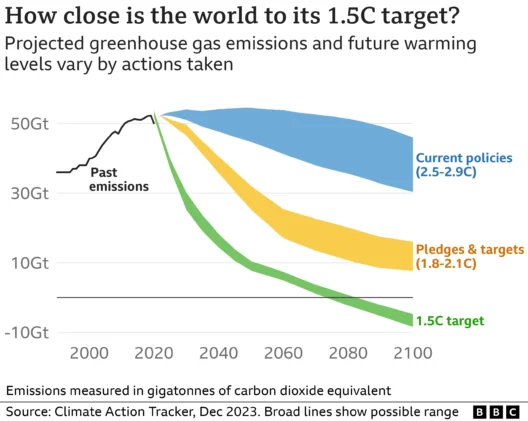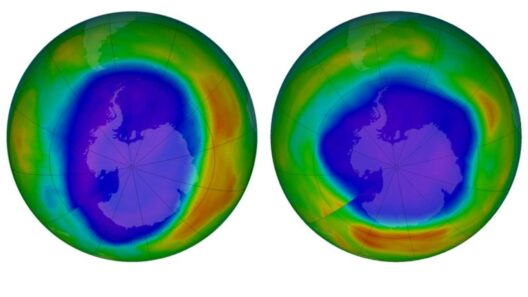The ocean has long been a subject of fascination, captivating humanity with its mysterious depths and vibrant life forms. Yet, beneath the beguiling surface lies a complex ecosystem that is undergoing profound transformations due to global warming. This phenomenon, often referred to as “The Ocean’s Fever,” is a manifestation of climate change that reshapes marine ecosystems and presents urgent ramifications for biodiversity, coastal communities, and the global climate at large.
In recent decades, there has been a marked increase in ocean temperatures, driven primarily by the accumulation of greenhouse gases in the atmosphere. As the planet warms, so too does the ocean, leading to a cascade of ecological shifts that are as detrimental as they are fascinating. Coral reefs, often revered as the rainforests of the sea, epitomize this plight. These vibrant ecosystems, which support an estimated 25% of all marine species, are suffering from mass bleaching events. When ocean temperatures rise even slightly, corals expel the symbiotic algae that provide them with color and sustenance, leading to widespread mortality. This not only disrupts the intricate relationships within these ecosystems but also threatens the livelihoods of millions who depend on reef fisheries and tourism.
However, ocean warming extends far beyond coral reefs. The phenomenon is causing alterations in the distribution of marine species. Many fish species are migrating towards cooler waters, following the shifting thermoclines. This migratory pattern can lead to conflict over fishing rights, as commercial fisheries scramble to adapt to these changes. Moreover, this redistribution of marine life risks disrupting established ecosystems and the traditional fishing practices of coastal communities, further exacerbating socio-economic disparities.
Notably, the impact of global warming on marine ecosystems is not uniformly distributed. In polar regions, the consequences of rising ocean temperatures are particularly acute. The melting of sea ice in the Arctic not only contributes to rising sea levels but also alters the habitat of numerous species, including seals, polar bears, and seabirds. As these species grapple with changing environments, entire food webs are being destabilized, leading to far-reaching implications for biodiversity and ecosystem resilience.
In addition to temperature increases, ocean acidification—a byproduct of elevated carbon dioxide levels—is another insidious threat. The absorption of excess CO2 by marine waters results in a chemical reaction that lowers pH levels, creating a more acidic environment. This transformation severely affects calcifying organisms such as oysters, clams, and certain types of plankton, which are foundational to the marine food web. The decline of these organisms diminishes food availability for larger marine species, resulting in declines in fish populations and perturbations in the predator-prey dynamics that are fundamental to marine ecosystems.
The impact on marine ecosystems is profound, presenting a myriad of challenges that extend to public health and global economies. As fish populations decline, the communities that rely on fishing as their primary source of income face dire economic repercussions. Furthermore, the degradation of aquatic environments can lead to the proliferation of harmful algal blooms, which release toxins that devastate marine life and threaten human health. These blooms are more likely to occur in warmer waters, trapping unsuspecting communities in a cycle of ecological and economic turmoil.
Consequently, addressing the intricate web of issues posed by global warming on marine ecosystems demands a multifaceted approach. Policy interventions aimed at reducing greenhouse gas emissions are paramount. Simultaneously, marine protected areas can foster resilience among ecosystems, allowing them to adapt to changes in their environment. By safeguarding critical habitats, such as mangroves, seagrasses, and estuaries, we can enhance biodiversity and provide sanctuaries for marine species under threat.
Restoration efforts also play a crucial role in mitigating the effects of climate change on marine environments. Initiatives focusing on the rehabilitation of coral reefs through techniques such as coral gardening and selective breeding for heat-resistant species may prove vital in maintaining reef ecosystems. Moreover, promoting sustainable fishing practices can alleviate pressures on fish populations and allow ecosystems the opportunity to recover.
Yet, individual actions cannot be overlooked in this global endeavor. Promoting awareness and education on the impacts of climate change on marine ecosystems can empower individuals to make informed choices regarding their consumption patterns. Supporting sustainably-sourced seafood and reducing carbon footprints through lifestyle changes contribute to a collective movement towards the restoration of our oceans.
The ocean’s fever may be a harbinger of change, but it also serves as a call to action. As global warming reshapes marine ecosystems, humanity stands on the precipice of a pivotal moment in history. The challenges may be monumental, yet the potential for recovery and resilience persists. While the ocean may be experiencing feverish transformations, we possess the tools and knowledge to forge a sustainable path forward. By prioritizing marine conservation, advocating for policy reform, and fostering collective responsibility, we can create a future where marine ecosystems thrive—both for the sustenance of life and the preservation of our planet.







